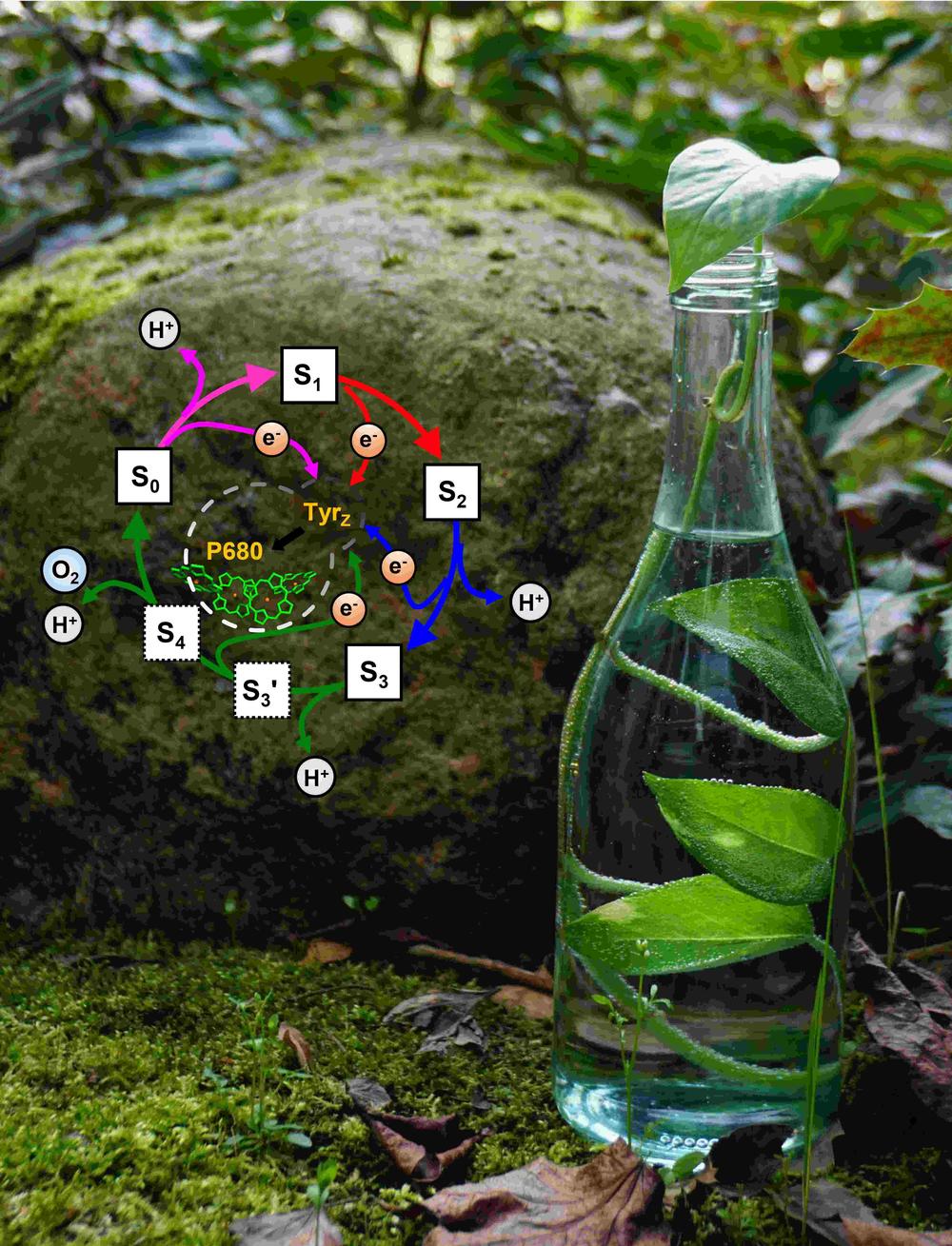Nature article on photosynthetic oxygen evolution
40 kilograms of spinach, 3 million laser flashes, and 600,000 simulated atoms were needed to identify a key element of photosynthetic oxygen evolution in collaboration with a research team from the Italian university of L'Aquila.
News vom 22.05.2023
A research team led by Freie Universität Berlin physicist Prof. Dr. Holger Dau and L'Aquila University physicist Prof. Dr. Leonardo Guidoni has been able to experimentally and computationally trace the movement of electrons and atoms in photosynthetic oxygen formation. The study, which has just appeared in the prestigious journal Nature, provides insights into the biological process that has likely been unchanged on Earth for the past three billion years. The findings are of high relevance since they may be significant for the production of green hydrogen or other renewable fuels.
The oxygen (O2) of the earth's atmosphere is formed by the light-driven splitting of water in plants, algae and cyanobacteria. This process could be traced in complex experiments with infrared light and understood by means of quantum chemical simulations. The scientists emphasize the connection to the production of green hydrogen or other renewable fuels that follows the biological paragon.
"In technical systems for the production of renewable fuels, both the use of rare precious metals and high energy losses are a problem. It is now possible to specifically target non-precious metal materials in which the coupled movement of the electrons and protons enables minimal energy losses,” says Holger Dau.
The formation of the O2 molecule begins in a state with four accumulated electron holes, the S4 state, which was postulated more than half a century ago and has remained enigmatic ever since. The research teams around Dau and Guidoni have now been able to identify this missing key element in photosynthetic O2 formation.
After several years of preparation, a complex experiment was successful, with which the movements of the electrons and protons could be tracked. For this purpose, particles of the photosystem II chlorophyll-protein complex were isolated from 40 kilograms of spinach. Then about 3 million laser flashes were fired over a period of 7 months and the time course of an infrared signal with microsecond time resolution was recorded for each of them. Several terabytes of measured data were then analyzed and, in combination with molecular mechanics calculations for almost 600,000 atoms and quantum chemical simulations, yielded the following picture:
First, a crucial proton vacancy is created in the protein by electrostatically remote-controlled sidechain deprotonation. A reactive oxygen radical is then formed in an amazing single-electron-multiproton transfer event. This is the slowest step in photosynthetic O2 evolution with only a moderate energy barrier and surprising entropic slowdown, hence the name of the publication in Nature (“The electron-proton bottleneck in photosynthetic oxygen evolution”). The researchers identify the previously enigmatic S4 state as an oxygen radical state; its formation is followed by rapid O-O binding and O2 release.
The joint work of the German-Italian team provides insight into a biological process that has likely been occurring in the same unique way for three billion years. This knowledge is also important to support the development of artificial water splitting systems.
